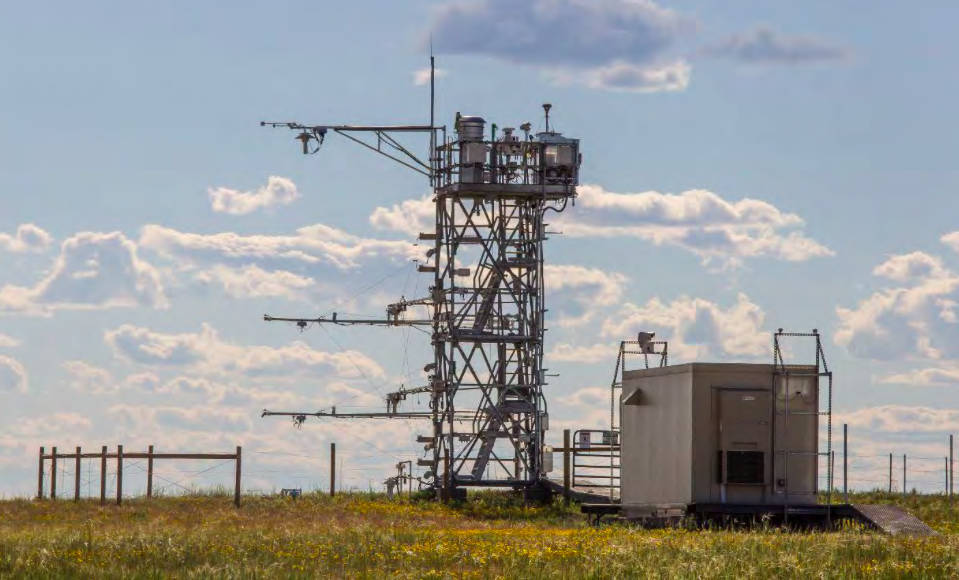On July 31, the Natural Area Reserves System Commission approved a special use permit to the National Science Foundation (NSF) to establish a National Ecological Observatory Network (NEON) field site within the Pu‘u Maka‘ala Natural Area Reserve (NAR) on Hawai’i island.
NEON sites across the country have been established to collect data needed to study climate change, land use and invasive species impacts on natural resources and biodiversity. The Hawai‘i site “would provide data for NEON’s Pacific Tropical domain (Domain 20), and would be the only site representing this domain for the network,” according to NEON staff.
In 2009, NEON and the U.S. Forest Service took the NARS Commission by surprise when they announced that they planned to establish a site within the Laupahoehoe NAR, also on Hawai‘i. Commissioners expressed grave concerns about proposed construction in the NAR and encouraged the agencies to look elsewhere.
When NEON approached the commission this year to establish a site at Pu‘u Maka‘ala, its proposal was much better received, even though some construction is still proposed. The organization plans to build a 105-foot research tower fitted with various sensors, an instrument hut, and two-foot-wide walkways within the forested area, among other things.
At the commission’s July meeting, former NARS Commission member John Stinson told NEON representatives that when the organization and the Forest Service first informed the commission of its Laupahoehoe proposal, “we beat ‘em up
pretty badly. … You have to convince us that this has to be inside the NAR. I can see the advantage to NEON to have it in Pu‘u Maka‘ala, but what’s in it for NARS?”
Steve Ellis of the NSF replied that one of the missions of the NARS is to understand its natural resources. NEON helps serve that need, he said.
Hawai‘i island NARS manager Nick Agorastos said that while monitoring NEON’s work in the NAR will be a huge responsibility for him and his staff, he hopes the project will help him meet a laundry list of research needs. “We don’t have the capacity to do this kind of science. I am in favor of this,” he said. In addition to climate data, NEON is planning to collect information on bird abundance and diversity, mosquito and ground beetle presence, various soil properties, and how plant species vary seasonally, according to its permit application.
Commissioner Sheila Conant also pointed out that the Laupahoehoe NAR was unsuitable for a number of reasons, including the fact that there was no electricity to the site and a road in would have to be bulldozed. That’s not the case at Pu‘u Maka‘ala, where there is electricity as well as already disturbed areas where some of NEON’s infrastructure can be built.
The commission chose to grant the NSF a 30-year permit on the condition that it be annually reviewed. The project still needs a Conservation District Use Permit from the state Board of Land and Natural Resources. The board is expected to vote on the matter at its September 8 meeting.
Construction of the tower is expected to take about six months. No trees taller than 15 feet will be trimmed. (For background on this, see “Commissioners Lambast NEON Reps for Surprise Selection of NAR Site,” from our October 2009
***
Commission Refrains from Granting
HECO a Permit to Remove Power Line
The Hawaiian Electric Company will have to wait a while before the NARS Commission is ready to grant the utility a special use permit to relocate nearly two miles of 70-year-old 11.5 kV power line that cut across the Ka‘ala NAR on O‘ahu. At the commission’s July meeting, HECO sought a permit to prepare the area ahead of the actual removal. Prep work included vegetation trimming to access trails to new power pole locations and to create a helicopter landing pad and staging area.
Although HECO’s permit application stated that there would likely be no significant environmental impacts from the project, commissioner Sheila Conant wasn’t so sure. The Ka‘ala NAR has such pristine, sensitive native habitat that boardwalks were installed long ago to prevent trampling.
“There’s a boardwalk for a reason,” she told HECO’s representatives, adding that she needed much more detail on the planned work and the kind of vegetation and native fauna (i.e., snails, shearwaters) that could be affected.
Hoping to avoid deferring permit approval to a future NARS meeting, DOFAW’s Emma Yuen asked whether the commissioners could get the details they desire from HECO representatives at that meeting. Although NARS staff had been working closely with HECO on the project, commissioners expressed their discomfort with the level of detail that had been included in the permit application, as well as their confusion as to whether the permit would cover just the prep work or the line removal, as well.
If it were the latter, the commission would definitely need more information, given the potential for serious damage during line removal. HECO representatives explained that in a best-case scenario, the poles are in good shape and remain upright while the line is slowly retracted using a pulley system. Should the worst case happen — a pole fails and the line falls to the ground — the line would immediately coil up, dragging the surrounding vegetation with it.
Given the lack of detail and the fact that the company still has to prepare an environmental assessment and habitat conservation plan for the $2 million project, the commission voted to defer the matter.
— Teresa Dawson


Leave a Reply